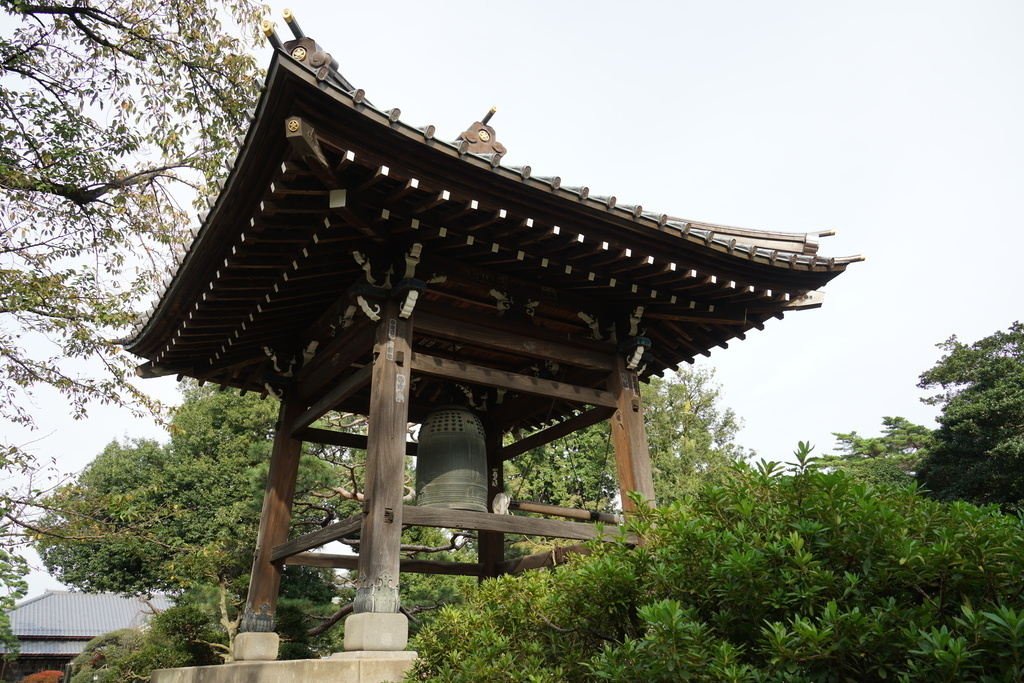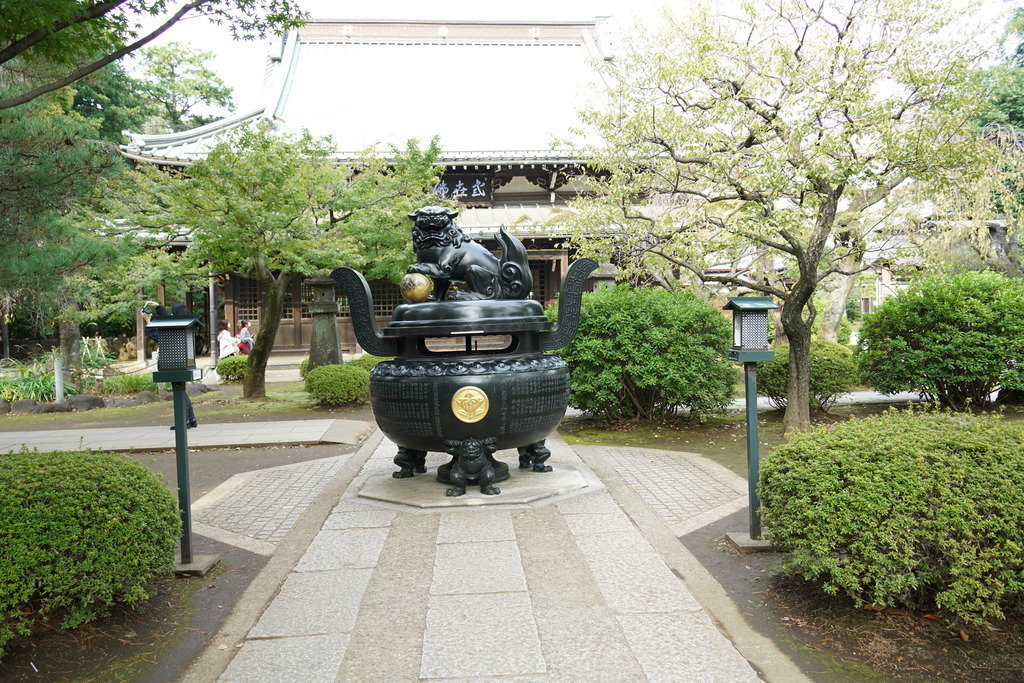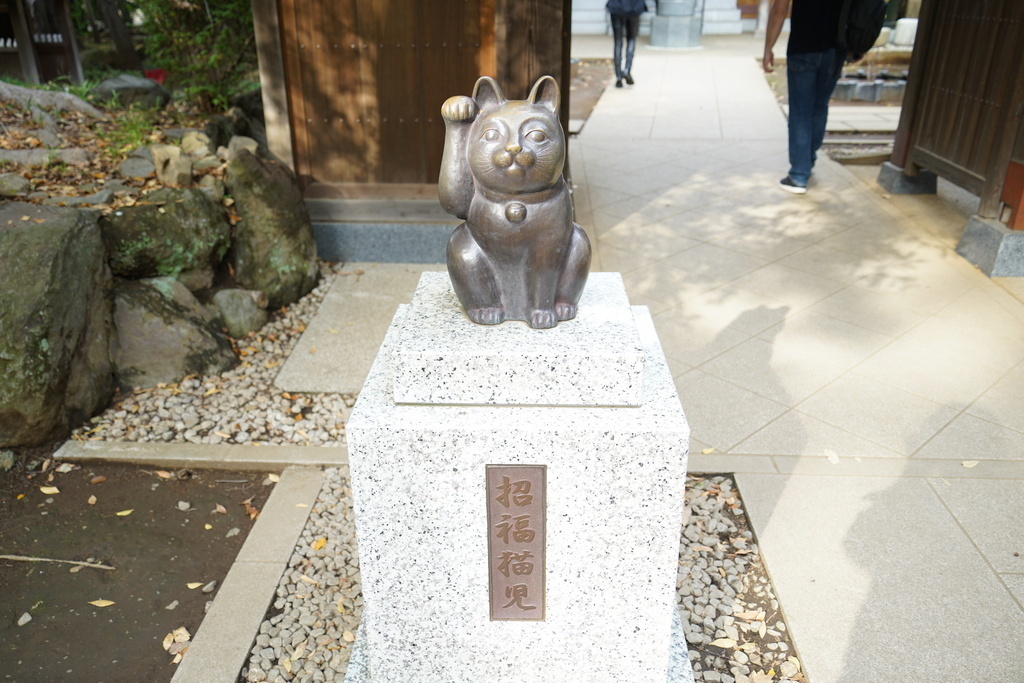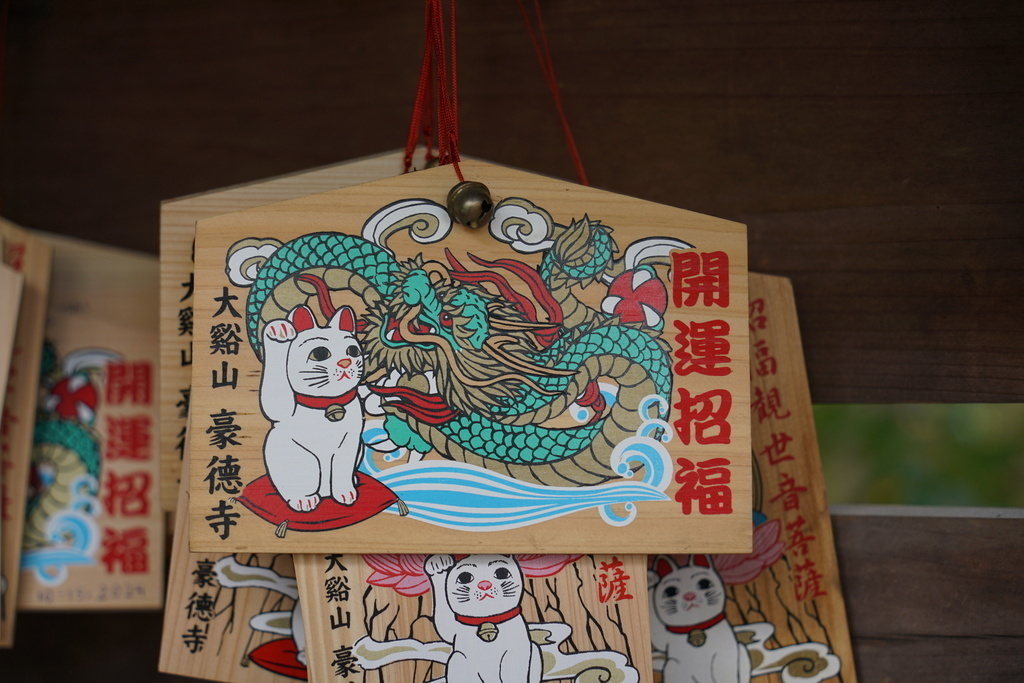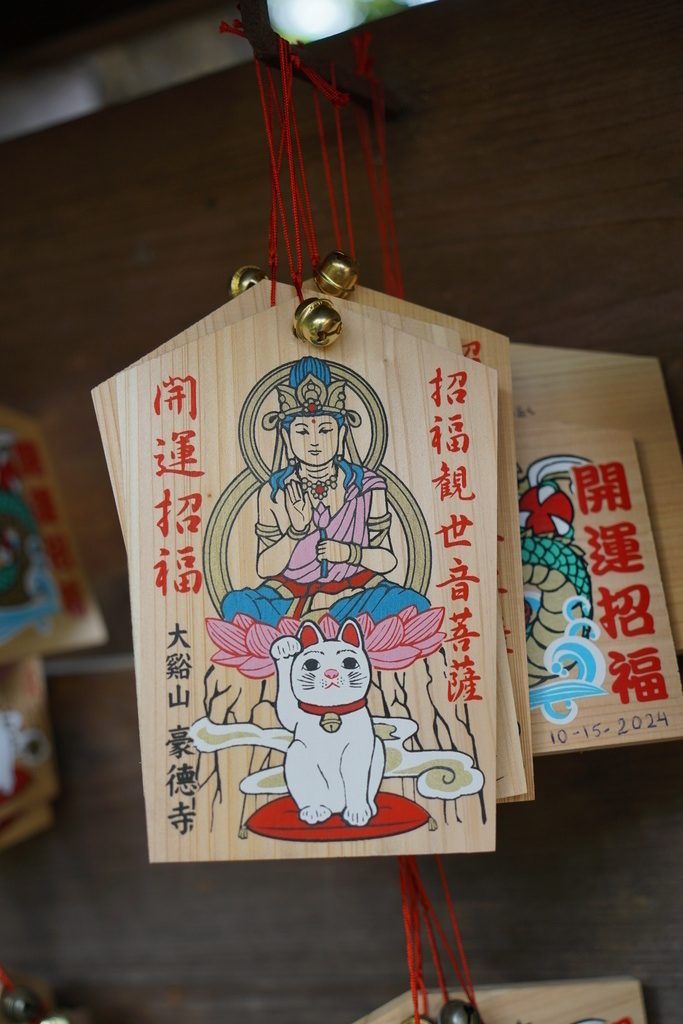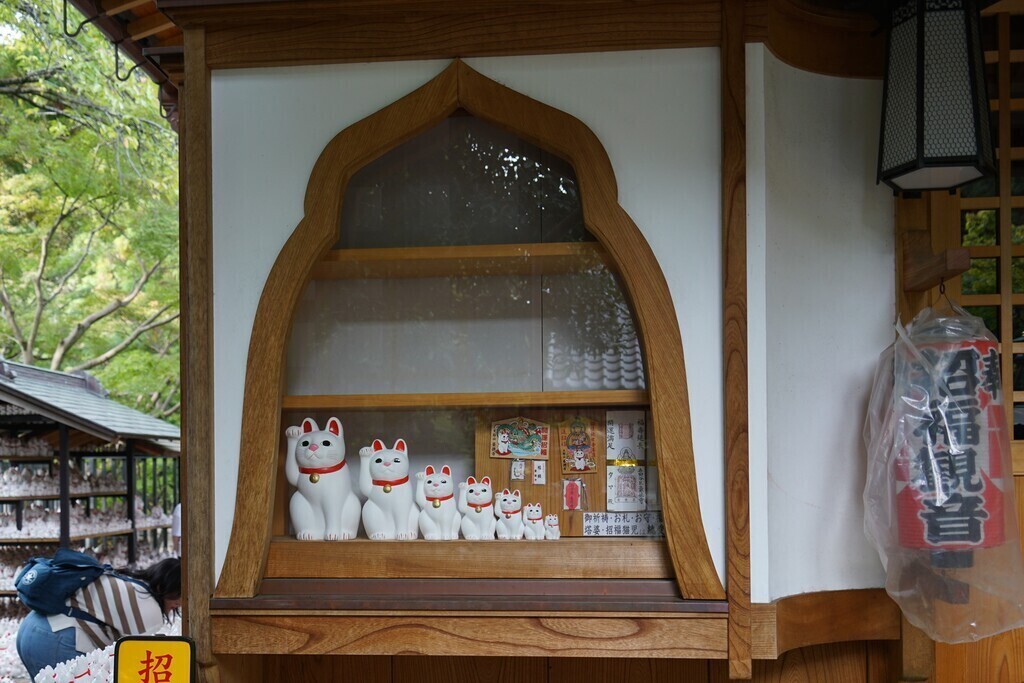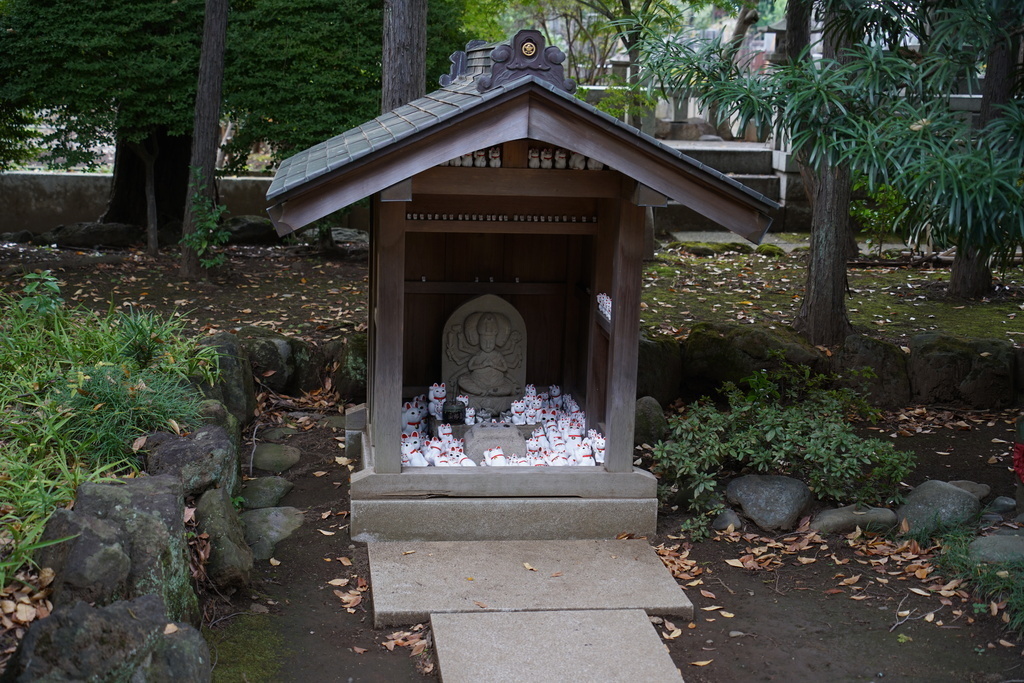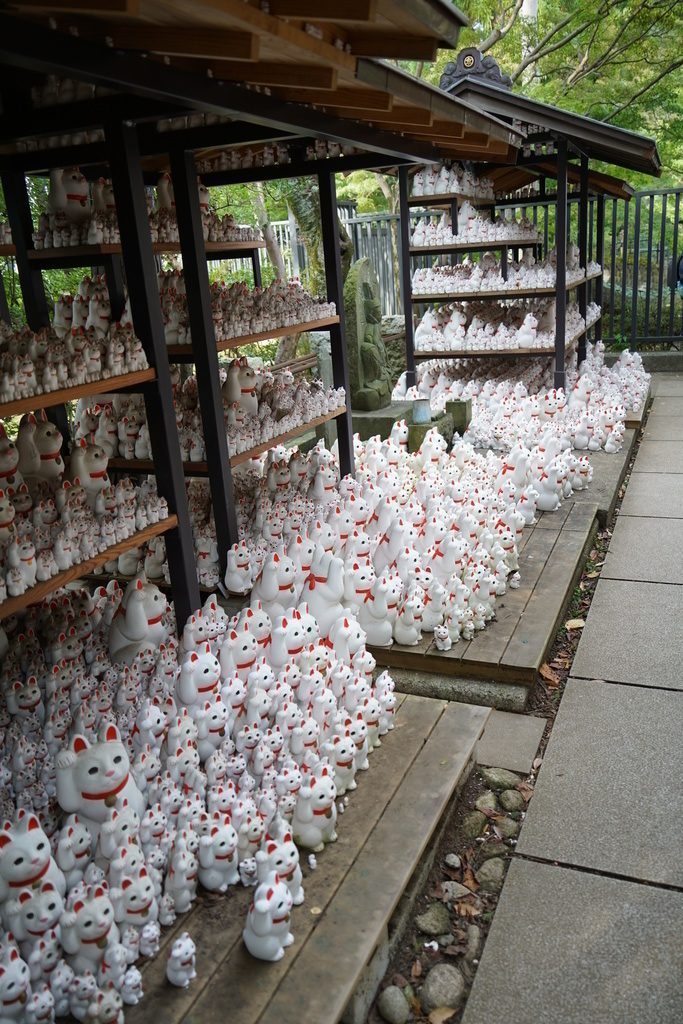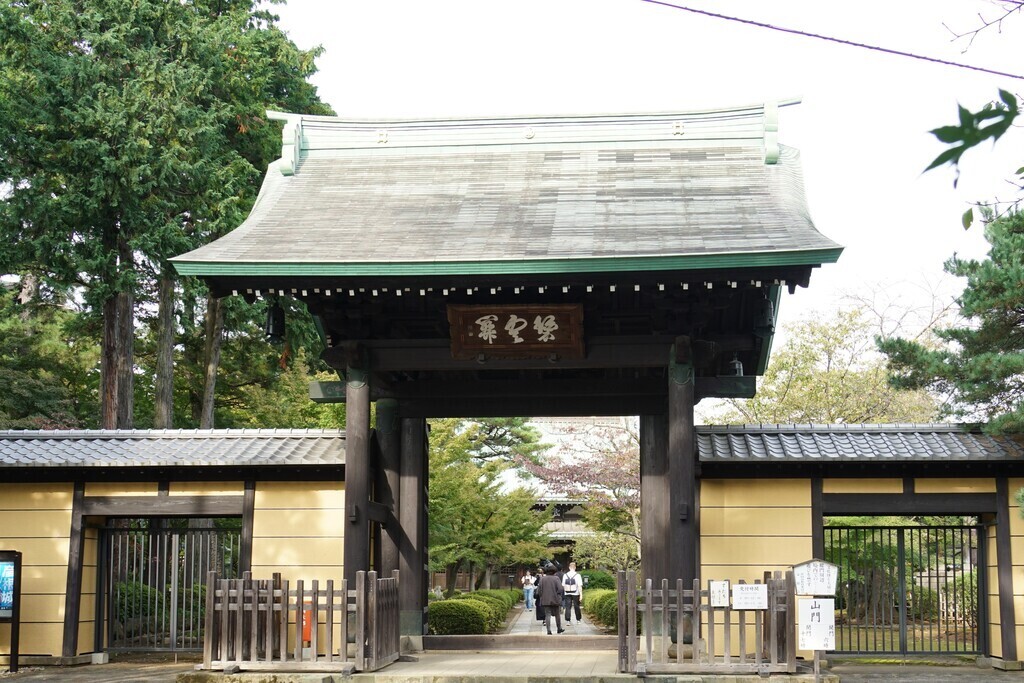豪徳寺(ごうとくじ)は、東京都世田谷区に位置する曹洞宗の古刹で、招き猫発祥の地として知られています。豪徳寺には、幸運と繁栄をもたらすシンボルとしての招き猫が無数に奉納されており、多くの人々が願掛けやお礼参りに訪れます。
伝説によれば、江戸時代初期、井伊家の殿様が雨宿りのためこの寺を訪れ、門前にいた一匹の猫が手招きする姿に誘われて本堂に入ったといいます。直後に雷雨が激しくなり、殿様は猫の導きで命拾いをしたと感謝し、豪徳寺を井伊家の菩提寺としました。この逸話から、豪徳寺では猫が「福を招く存在」として大切にされ、今日の招き猫のルーツとなったのです。
豪徳寺の境内には、さまざまなサイズの招き猫が祀られた専用の奉納台があり、その光景は訪れる人々を惹きつけます。猫好きな人々や観光客が幸運を求めて訪れるスポットとしても人気です。
Gotokuji Temple, located in Tokyo’s Setagaya Ward, is a historic Soto Zen temple renowned as the birthplace of the “maneki-neko,” or beckoning cat, which is a symbol of good fortune and prosperity in Japanese culture. The temple grounds are filled with countless maneki-neko statues that visitors have dedicated, drawing people who come to pray for luck or to give thanks.
According to legend, during the early Edo period, a feudal lord from the Ii clan was caught in a rainstorm and sought shelter near Gotokuji. He noticed a cat at the temple gate, beckoning him to enter. As soon as he followed the cat, a violent thunderstorm began. Grateful for his safety, the lord made Gotokuji the family temple of the Ii clan. This story transformed cats into symbols of luck, and Gotokuji became the origin of the maneki-neko.
Today, Gotokuji’s grounds feature a dedicated platform filled with maneki-neko statues of various sizes, creating a mesmerizing sight that captivates visitors. The temple is especially popular among cat lovers and tourists who visit in search of good fortune.
